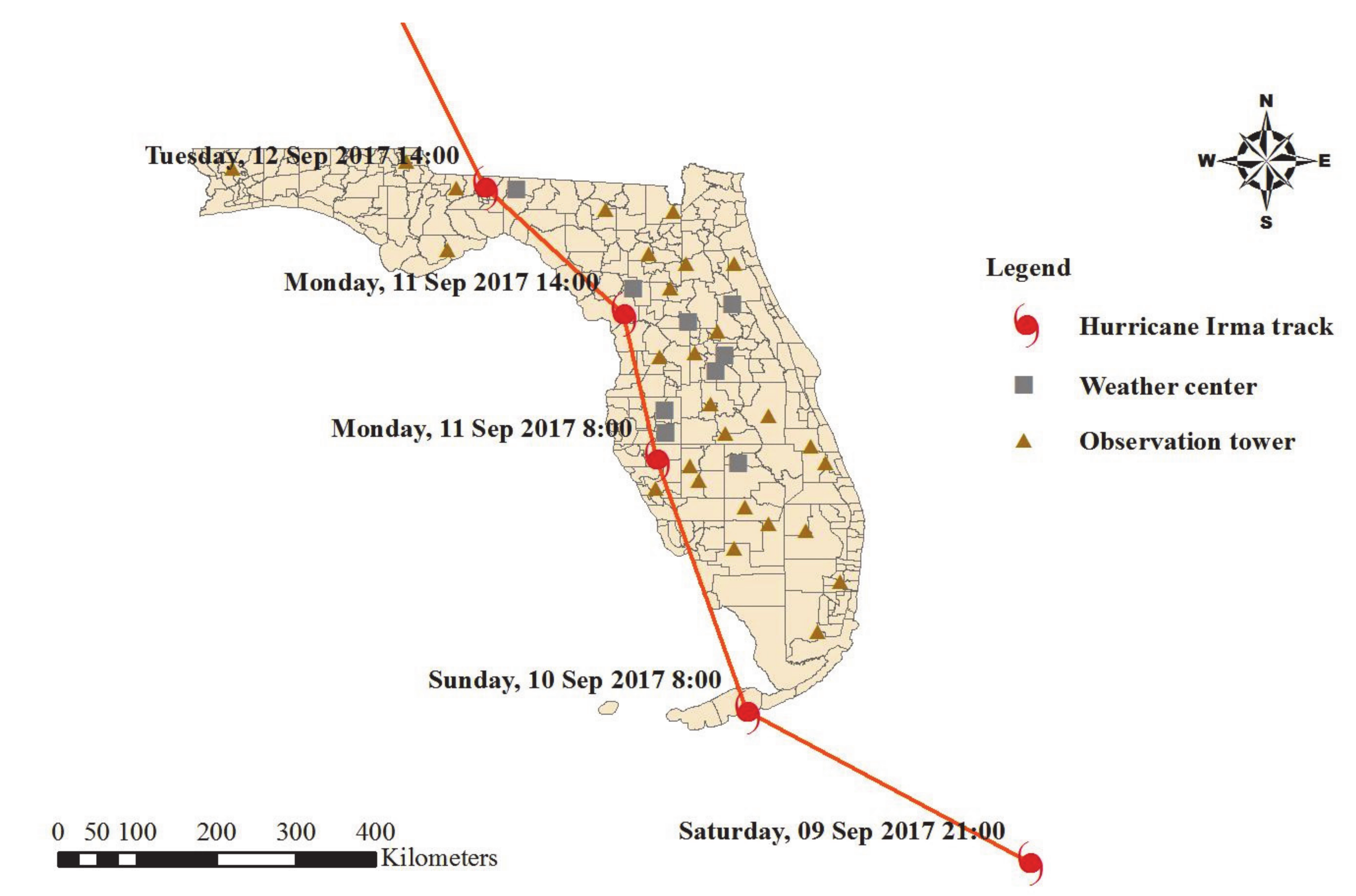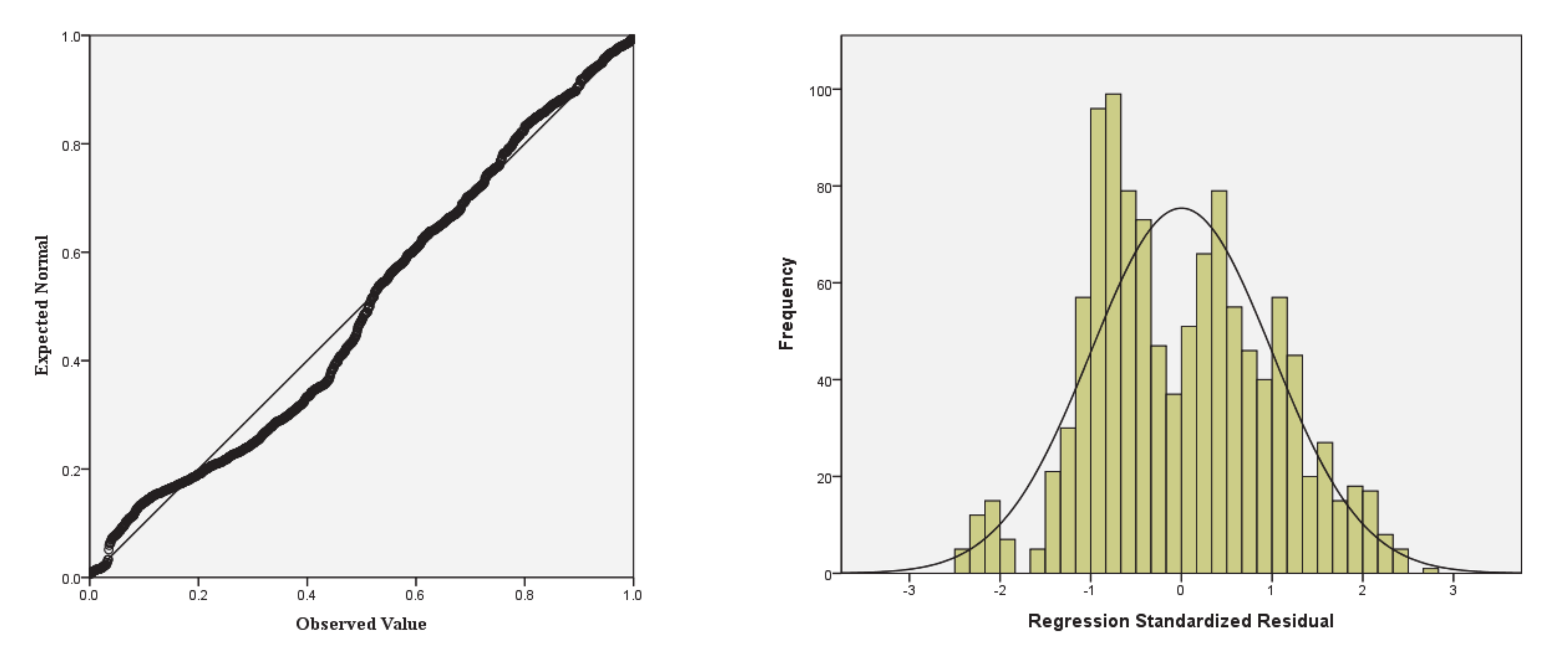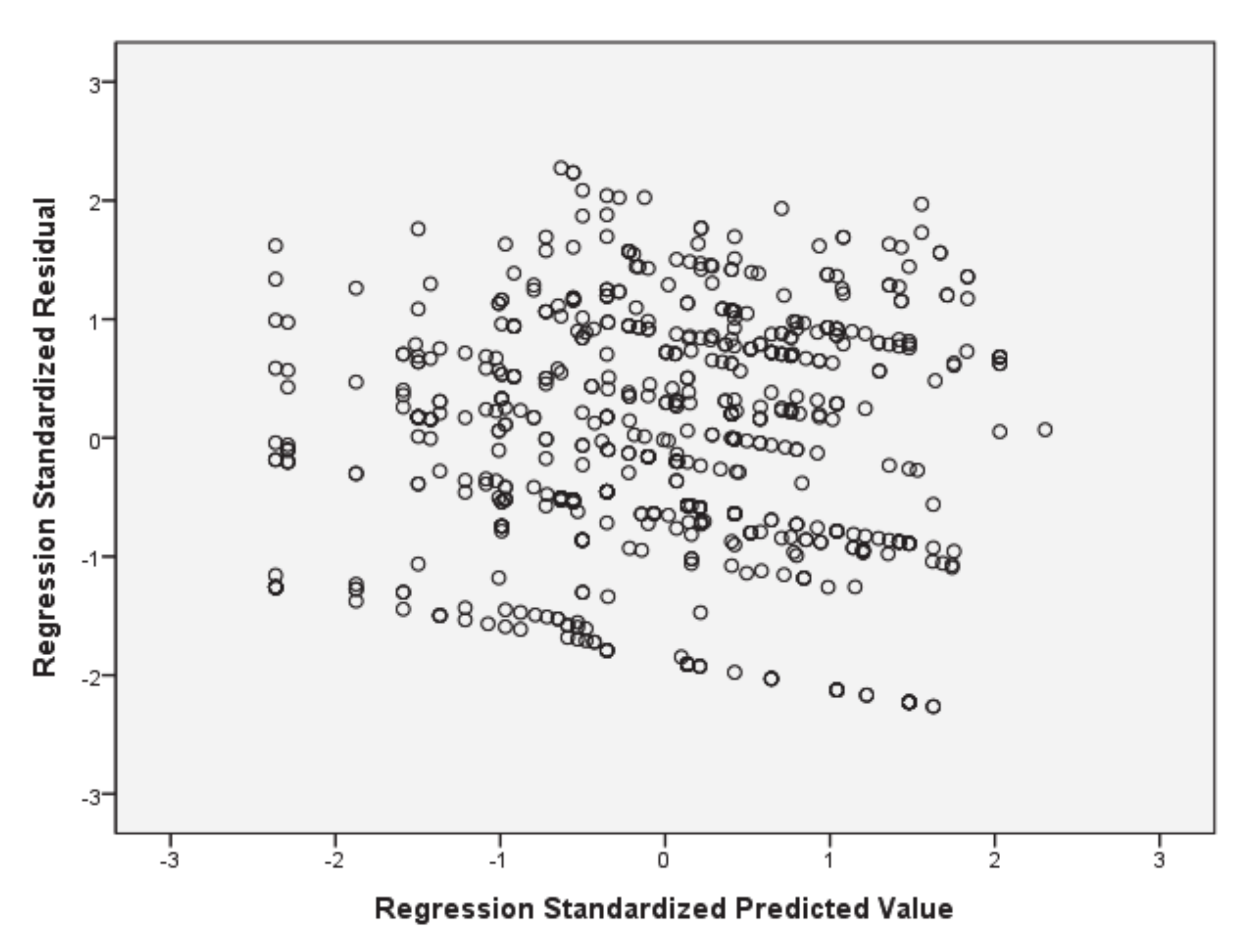Identifying Risk Indicators for Natural Hazard-Related Power Outages as a Component of Risk Assessment: An Analysis Using Power Outage Data from Hurricane Irma
Abstract
1. Introduction
1.1. Research Background
1.2. Research Objective
2. Literature Review
3. Research Methods
3.1. Case Study Approach
3.2. Dependent Variable
3.3. Independent Variables
3.4. Data Collection and Management
3.5. Multiple Linear Regression Analysis
4. Results
5. Discussion
6. Conclusions
Author Contributions
Funding
Conflicts of Interest
References
- Intergovernmental Panel on Climate Change (IPCC). Contribution of Working Group I to the Fourth Assessment Report of the Intergovernmental Panel on Climate Change; Cambridge University Press: Cambridge, UK, 2007. [Google Scholar]
- Kim, J.-M.; Son, S.; Lee, S.; Son, K. Cost of Climate Change: Risk of Building Loss from Typhoon in South Korea. Sustainability 2020, 12, 7107. [Google Scholar] [CrossRef]
- Jongman, B.; Ward, P.J.; Aerts, J.C. Global exposure to river and coastal flooding: Long term trends and changes. Glob. Environ. Chang. 2012, 22, 823–835. [Google Scholar] [CrossRef]
- Jufri, F.H.; Widiputra, V.; Jung, J. State-of-the-art review on power grid resilience to extreme weather events: Definitions, frameworks, quantitative assessment methodologies, and enhancement strategies. Appl. Energy 2019, 239, 1049–1065. [Google Scholar] [CrossRef]
- Emanuel, K. Will Global Warming Make Hurricane Forecasting More Difficult? Am. Meteorol. Soc. 2016, 98, 294–501. [Google Scholar] [CrossRef]
- Kreimer, A.; Arnold, M. World Bank’s Role in Reducing Impacts of Disasters. Nat. Hazards Rev. 2000, 1, 37–42. [Google Scholar] [CrossRef]
- Chang, S.E. Evaluating Disaster Mitigations: Methodology for Urban Infrastructure Systems. Nat. Hazards Rev. 2003, 4, 186–196. [Google Scholar] [CrossRef]
- Münchener Rückversicherungs-Gesellschaft (Munich RE). Topics Geo: Natural Catastrophes 2017: Analysis, Assessment; Munich RE: München, Germany, 2018. [Google Scholar]
- Executive Office of the President. Economic Benefits of Increasing Electric Grid Resilience to Weather Outages; The White House: Washington, DC, USA, 2013. [Google Scholar]
- Kenward, A.; Raja, U. Blackout: Extreme Weather, Climate Change and Power Outages; Climate Central: Princeton, NJ, USA, 2014. [Google Scholar]
- Campbell, R.J. Weather-Related Power Outages and Electric System Resiliency; Library of Congress Washington DC Congressional Research Service: Washington, DC, USA, 2012. [Google Scholar]
- Larsen, H.L.; LaCommare, K.H.; Eto, J.H.; Sweeney, J.L. Assessing Changes in the Reliability of the U.S. Electric Power Systems; Lawrence Berkeley National Laboratory: Berkeley, CA, USA, 2015. [Google Scholar]
- Nateghi, R.; Guikema, S.D.; Wu, Y.; Bruss, C.B. Critical Assessment of the Foundations of Power Transmission and Distribution Reliability Metrics and Standards. Risk Anal. 2015, 36, 4–15. [Google Scholar] [CrossRef] [PubMed]
- Coumou, D.; Robinson, A. Historic and future increase in the global land area affected by monthly heat extremes. Environ. Res. Lett. 2013, 8, 034018. [Google Scholar] [CrossRef]
- Peterson, T.C.; Hoerling, M.P.; Stott, P.A.; Herring, S.C. Explaining extreme events of 2012 from a climate perspective. Bull. Am. Meteorol. Soc. 2013, 94, S1–S74. [Google Scholar] [CrossRef]
- Webster, P.J.; Holland, G.J.; Curry, J.A.; Chang, H.-R. Changes in Tropical Cyclone Number, Duration, and Intensity in a Warming Environment. Science 2005, 309, 1844–1846. [Google Scholar] [CrossRef]
- Pielke, R.; Gratz, J.; Landsea, C.W.; Collins, D.; Saunders, M.A.; Musulin, R. Normalized Hurricane Damage in the United States: 1900–2005. Nat. Hazards Rev. 2008, 9, 29–42. [Google Scholar] [CrossRef]
- Natural Catastrophes and Man-Made Disasters in 2014: Convective and Winter Storms Generate Most Losses; Swiss Re Ltd.: Zurich, Switzerland, 2015.
- Blake, E.S.; Kimberlain, T.B.; Berg, R.J.; Cangialosi, J.P.; Beven II, J.L. Tropical Cyclone Report: Hurricane Sandy; National Hurricane Center: Miami, FL, USA, 2013. [Google Scholar]
- Blake, E.S.; Rappaport, E.N.; Landsea, C.W. The Deadliest, Costliest, and Most Intense United States Tropical Cyclones from 1851 to 2006 (And Other Frequently Requested Hurricane Facts); NOAA/National Weather Service: Miami, FL, USA, 2007. [Google Scholar]
- Xu, L.; Brown, R.E. Hurricane simulation for Florida utility damage assessment. In Proceedings of the 2008 IEEE Power and Energy Society General Meeting—Conversion and Delivery of Electrical Energy in the 21st Century, Pittsburgh, PA, USA, 20–24 July 2008. [Google Scholar]
- Liu, H.; Davidson, R.A.; Rosowsky, D.; Stedinger, J.R. Negative Binomial Regression of Electric Power Outages in Hurricanes. J. Infrastruct. Syst. 2005, 11, 258–267. [Google Scholar] [CrossRef]
- Han, S.-R.; Rosowsky, D.; Guikema, S.D. Integrating Models and Data to Estimate the Structural Reliability of Utility Poles during Hurricanes. Risk Anal. 2013, 34, 1079–1094. [Google Scholar] [CrossRef] [PubMed]
- Sissine, F. Energy Independence and Security Act of 2007: A Summary of Major Provisions; Library of Congress Washington DC Congressional Research Service: Washington, DC, USA, 2007. [Google Scholar]
- Yum, S.-G.; Kim, J.-M.; Son, K. Natural Hazard Influence Model of Maintenance and Repair Cost for Sustainable Accommodation Facilities. Sustainability 2020, 12, 4994. [Google Scholar] [CrossRef]
- U.S. Green Building Council (U.S. GBC). LEED Reference Guide for Green Building Design and Construction; U.S. Green Building Council: Washington, DC, USA, 2009. [Google Scholar]
- Federal Emergency Management Agency (FEMA). HAZUS-MH Estimated Annualized Earthquake Losses for the United States; FEMA: Washington, DC, USA, 2008. [Google Scholar]
- Tantala, M.W.; Nordenson, G.J.; Deodatis, G.; Jacob, K. Earthquake loss estimation for the New York City Metropolitan Region. Soil Dyn. Earthq. Eng. 2008, 28, 812–835. [Google Scholar] [CrossRef]
- Remo, J.W.; Pinter, N. Hazus-MH earthquake modeling in the central USA. Nat. Hazards 2012, 63, 1055–1081. [Google Scholar] [CrossRef]
- Rein, A.; Corotis, R.B. An overview approach to seismic awareness for a “quiescent” region. Nat. Hazards 2013, 67, 335–363. [Google Scholar] [CrossRef]
- Wei, H.-H.; Skibniewski, M.J.; Shohet, I.M.; Yao, X. Life cycle environmental performance of natural hazard mitigation for buildings. J. Perform. Constr. Facil. 2015, 30, 1–13. [Google Scholar]
- Chang, S.E.; Shinozuka, M. Life-Cycle Cost Analysis with Natural Hazard Risk. J. Infrastruct. Syst. 1996, 2, 118–126. [Google Scholar] [CrossRef]
- Shinozuka, M.; Chang, S.E.; Cheng, T.C.; Feng, M.; O’Rourke, T.D.; Saadeghvaziri, M.A.; Dong, X.; Jin, X.; Wang, Y.; Shi, P. Resilience of Integrated Power and Water Systems; MCEER: Buffalo, NY, USA, 2004. [Google Scholar]
- Wei, H.-H.; Shohet, I.M.; Skibniewski, M.J.; Shapira, S.; Yao, X. Assessing the Lifecycle Sustainability Costs and Benefits of Seismic Mitigation Designs for Buildings. J. Arch. Eng. 2016, 22, 04015011. [Google Scholar] [CrossRef]
- Federal Emergency Management Agency (FEMA). Next-Generation Performance-Based Seismic Design Guidelines; FEMA: Washington, DC, USA, 2006. [Google Scholar]
- Padgett, J.E.; Tapia, C. Sustainability of Natural Hazard Risk Mitigation: Life Cycle Analysis of Environmental Indicators for Bridge Infrastructure. J. Infrastruct. Syst. 2013, 19, 395–408. [Google Scholar] [CrossRef]
- Hamburger, R.; Rojahn, C.; Heintz, J.; Mahoney, M. FEMA P58: Next-generation building seismic performance assessment methodology. In Proceedings of the 15th World Conference on Earthquake Engineering, Lisbon, Portugal, 24–28 September 2012; International Association for Earthquake Engineering: Tokyo, Japan, 2012. [Google Scholar]
- Comber, M.; Poland, C. Disaster resilience and sustainable design: Quantifying the benefits of a holistic design approach. In Proceedings of the Structures Congress, Pittsburgh, PA, USA, 2–4 May 2013. [Google Scholar]
- Feese, C.; Li, Y.; Bulleit, W.M. Assessment of Seismic Damage of Buildings and Related Environmental Impacts. J. Perform. Constr. Facil. 2015, 29, 04014106. [Google Scholar] [CrossRef]
- Hossain, K.A.; Gencturk, B. Life-Cycle Environmental Impact Assessment of Reinforced Concrete Buildings Subjected to Natural Hazards. J. Arch. Eng. 2016, 22, 22. [Google Scholar] [CrossRef]
- Sinisuka, N.I.; Nugraha, H. Life cycle cost analysis on the operation of power generation. J. Qual. Maint. Eng. 2013, 19, 5–24. [Google Scholar] [CrossRef]
- Shinozuka, M.; Rose, A.; Eguchi, R. Engineering and Socioeconomic Impacts of Earthquakes; MCEER: Buffalo, NY, USA, 1998. [Google Scholar]
- Shinozuka, M.; Cheng, T.C.; Feng, M.; Mau, S.T. Seismic Performance Analysis of Electric Power Systems; MCEER: Buffalo, NY, USA, 1999. [Google Scholar]
- Cagnan, Z.; Davidson, R.A.; Guikema, S.D. Post-Earthquake Restoration Planning for Los Angeles Electric Power. Earthq. Spectra 2006, 22, 589–608. [Google Scholar] [CrossRef]
- Xu, N.; Guikema, S.D.; Davidson, R.; Nozick, L.; Cagnan, Z.; Vaziri, K. Optimizing scheduling of post-earthquake electric power restoration tasks. Earthq. Eng. Struct. Dyn. 2007, 36, 265–284. [Google Scholar] [CrossRef]
- Guikema, S.D.; Nateghi, R. Modeling Power Outage Risk from Natural Hazards; Oxford Research Encyclopedia of Natural Hazard Science: Oxford, UK, 2018. [Google Scholar]
- Davidson, R.A.; Liu, H.; Sarpong, I.K.; Sparks, P.; Rosowsky, D.V. Electric Power Distribution System Performance in Carolina Hurricanes. Nat. Hazards Rev. 2003, 4, 36–45. [Google Scholar] [CrossRef]
- Reed, D.A. Electric utility distribution analysis for extreme winds. J. Wind. Eng. Ind. Aerodyn. 2008, 96, 123–140. [Google Scholar] [CrossRef]
- Han, S.-R.; Guikema, S.D.; Quiring, S.M. Improving the Predictive Accuracy of Hurricane Power Outage Forecasts Using Generalized Additive Models. Risk Anal. 2009, 29, 1443–1453. [Google Scholar] [CrossRef]
- Guikema, S.D.; Nateghi, R.; Quiring, S.M.; Staid, A.; Reilly, A.; Gao, M. Predicting Hurricane Power Outages to Support Storm Response Planning. IEEE Access 2014, 2, 1364–1373. [Google Scholar] [CrossRef]
- Nateghi, R.; Guikema, S.D.; Quiring, S.M. Power Outage Estimation for Tropical Cyclones: Improved Accuracy with Simpler Models. Risk Anal. 2013, 34, 1069–1078. [Google Scholar] [CrossRef] [PubMed]
- Balijepalli, N.; Venkata, S.; Richter, C.; Christie, R.; Longo, V. Distribution System Reliability Assessment Due to Lightning Storms. IEEE Trans. Power Deliv. 2005, 20, 2153–2159. [Google Scholar] [CrossRef]
- Quiring, S.M.; Zhu, L.; Guikema, S.D. Importance of soil and elevation characteristics for modeling hurricane-induced power outages. Nat. Hazards 2010, 58, 365–390. [Google Scholar] [CrossRef]
- Noshadravan, A.; Miller, T.R.; Gregory, J. A Lifecycle Cost Analysis of Residential Buildings including Natural Hazard Risk. J. Constr. Eng. Manag. 2017, 143, 04017017. [Google Scholar] [CrossRef]
- Burton, C.G. Social Vulnerability and Hurricane Impact Modeling. Nat. Hazards Rev. 2010, 11, 58–68. [Google Scholar] [CrossRef]
- Dunion, J.; Landsea, C.W.; Houston, S.H.; Powell, M.D. A Reanalysis of the Surface Winds for Hurricane Donna of 1960. Mon. Weather. Rev. 2003, 131, 1992–2011. [Google Scholar] [CrossRef]
- Watson, C.C.; Johnson, M.E. Hurricane Loss Estimation Models: Opportunities for Improving the State of the Art. Bull. Am. Meteorol. Soc. 2004, 85, 1713–1726. [Google Scholar] [CrossRef]
- Vickery, P.J.; Skerlj, P.F.; Lin, J.; Twisdale, L.A.; Young, M.A.; Lavelle, F.M. HAZUS-MH Hurricane Model Methodology. II: Damage and Loss Estimation. Nat. Hazards Rev. 2006, 7, 94–103. [Google Scholar] [CrossRef]
- Choi, O.; Fisher, A. The Impacts of Socioeconomic Development and Climate Change on Severe Weather Catastrophe Losses: Mid-Atlantic Region (MAR) and the U.S. Clim. Chang. 2003, 58, 149–170. [Google Scholar] [CrossRef]
- Brody, S.D.; Zahran, S.; Highfield, W.E.; Grover, H.; Vedlitz, A. Identifying the impact of the built environment on flood damage in Texas. Disasters 2008, 32, 1–18. [Google Scholar] [CrossRef]
- Khanduri, A.; Morrow, G. Vulnerability of buildings to windstorms and insurance loss estimation. J. Wind. Eng. Ind. Aerodyn. 2003, 91, 455–467. [Google Scholar] [CrossRef]
- Mitchell, S.J. Stem growth responses in Douglas-fir and Sitka spruce following thinning: Implications for assessing wind-firmness. For. Ecol. Manag. 2000, 135, 105–114. [Google Scholar] [CrossRef]
- Appelt, P.J.; Goodfellow, J.W. Research on how trees cause interruptions—Applications to vegetation management. In Proceedings of the Rural Electric Power Conference, Scottsdale, AZ, USA, 25 May 2004; IEEE: Piscataway, NJ, USA, 2004. [Google Scholar]
- Fang, J.; Lau, C.K.M.; Lu, Z.; Wu, W.; Zhu, L. Natural disasters, climate change, and their impact on inclusive wealth in G20 countries. Environ. Sci. Pollut. Res. 2018, 26, 1455–1463. [Google Scholar] [CrossRef] [PubMed]
- Zhou, L.; Wu, X.; Xu, Z.; Fujita, H. Emergency decision making for natural disasters: An overview. Int. J. Disaster Risk Reduct. 2018, 27, 567–576. [Google Scholar] [CrossRef]
- Majdalani, Z.; Ajam, M.; Mezher, T. Sustainability in the construction industry: A Lebanese case study. Constr. Innov. 2006, 6, 33–46. [Google Scholar] [CrossRef]
- Brockett, P.L.; Golden, L.L.; Betak, J. Different Market Methods for Transferring Financial Risks in Construction. In Risk Management in Construction Projects; IntechOpen: London, UK, 2019. [Google Scholar]
- Bal, M.; Bryde, D.; Fearon, D.; Ochieng, E. Stakeholder Engagement: Achieving Sustainability in the Construction Sector. Sustainability 2013, 5, 695–710. [Google Scholar] [CrossRef]
- Shen, L.; Wu, Y.; Zhang, X. Key Assessment Indicators for the Sustainability of Infrastructure Projects. J. Constr. Eng. Manag. 2011, 137, 441–451. [Google Scholar] [CrossRef]
- Wilderer, P.A.; Renn, O.; Grambow, M.; Molls, M.; Mainzer, K. Sustainable Risk Management; Springer International Publishing: Cham, Switzerland, 2018. [Google Scholar]
- Duffey, R.B. Power Restoration Prediction Following Extreme Events and Disasters. Int. J. Disaster Risk Sci. 2018, 10, 134–148. [Google Scholar] [CrossRef]



| Variable | Description | Unit | Data Source |
|---|---|---|---|
| ROF | Number of power outages per 100,000 people | Number of power outages/100,000 | Power company operations centers (n = 18) (Apopka, Deland, Jamestown, Longwood, Inverness, Monticello, Ocala, Buena Vista, Clermont, Se Orlando, Highlands, Lake Wales, Winter Garden, Clearwater, Seven Springs, St. Petersburg, Walsingham, Zephyrhills Bay) |
| Maximum sustained wind speed | 10 min maximum sustained wind speed (based on the weather station closest to the point of the outage) | m/s | Weather stations (n = 9) (Dover, Balm, Apopka, Bronson, Ocklawaha, Sebring, Monticello, Pierson, Avalon) |
| Total rainfall | Total amount of rainfall per day | cm | |
| Tree density | Number of trees per 1000 m2 where power outage data were reported | Number of trees/1000 m2 | Florida Geographic Data Library |
| County | N |
|---|---|
| Lake | 163 |
| Jefferson | 120 |
| Wakulla | 86 |
| Polk | 82 |
| Citrus | 78 |
| Pinellas | 78 |
| Highlands | 75 |
| Walton | 62 |
| Seminole | 42 |
| Orange | 39 |
| Total | 825 |
| Category | Reported Cases | Mean | SD |
|---|---|---|---|
| Dependent Variable | |||
| ROF | 825 | 1.955 | 2.001 |
| Independent Variables | |||
| Maximum sustained wind speed (m/s) | 825 | 15.563 | 12.821 |
| Total rainfall (cm) | 825 | 0.291 | 1.051 |
| Tree density (number of trees/1000 m2) | 825 | 3.134 | 1.432 |
| Sum of Squares | df | Mean Square | F | Sig. | ||
|---|---|---|---|---|---|---|
| Regression | 454.200 | 5 | 90.84 | 202.768 | 0.000 | 0.512 |
| Residual | 411.712 | 919 | 0.448 | |||
| Total | 895.912 | 924 | ||||
| (2) | ||||||
| Variable | Non-Standardized Coefficient | Standardized Coefficient | Significance Probability (p-Value) | Collinearity Statistics (VIF) |
|---|---|---|---|---|
| (Constant) | 0.129 | 0.259 | ||
| Maximum sustained wind speed (m/s) | 0.112 | 0.092 | 0.024 * | 1.283 |
| Total rainfall (cm) | 0.227 | 0.118 | 0.001 * | 1.309 |
| Tree density (number of tree/1000 m2) | 0.094 | 0.211 | 0.025 * | 1.016 |
© 2020 by the authors. Licensee MDPI, Basel, Switzerland. This article is an open access article distributed under the terms and conditions of the Creative Commons Attribution (CC BY) license (http://creativecommons.org/licenses/by/4.0/).
Share and Cite
Yum, S.-G.; Son, K.; Son, S.; Kim, J.-M. Identifying Risk Indicators for Natural Hazard-Related Power Outages as a Component of Risk Assessment: An Analysis Using Power Outage Data from Hurricane Irma. Sustainability 2020, 12, 7702. https://doi.org/10.3390/su12187702
Yum S-G, Son K, Son S, Kim J-M. Identifying Risk Indicators for Natural Hazard-Related Power Outages as a Component of Risk Assessment: An Analysis Using Power Outage Data from Hurricane Irma. Sustainability. 2020; 12(18):7702. https://doi.org/10.3390/su12187702
Chicago/Turabian StyleYum, Sang-Guk, Kiyoung Son, Seunghyun Son, and Ji-Myong Kim. 2020. "Identifying Risk Indicators for Natural Hazard-Related Power Outages as a Component of Risk Assessment: An Analysis Using Power Outage Data from Hurricane Irma" Sustainability 12, no. 18: 7702. https://doi.org/10.3390/su12187702
APA StyleYum, S.-G., Son, K., Son, S., & Kim, J.-M. (2020). Identifying Risk Indicators for Natural Hazard-Related Power Outages as a Component of Risk Assessment: An Analysis Using Power Outage Data from Hurricane Irma. Sustainability, 12(18), 7702. https://doi.org/10.3390/su12187702







